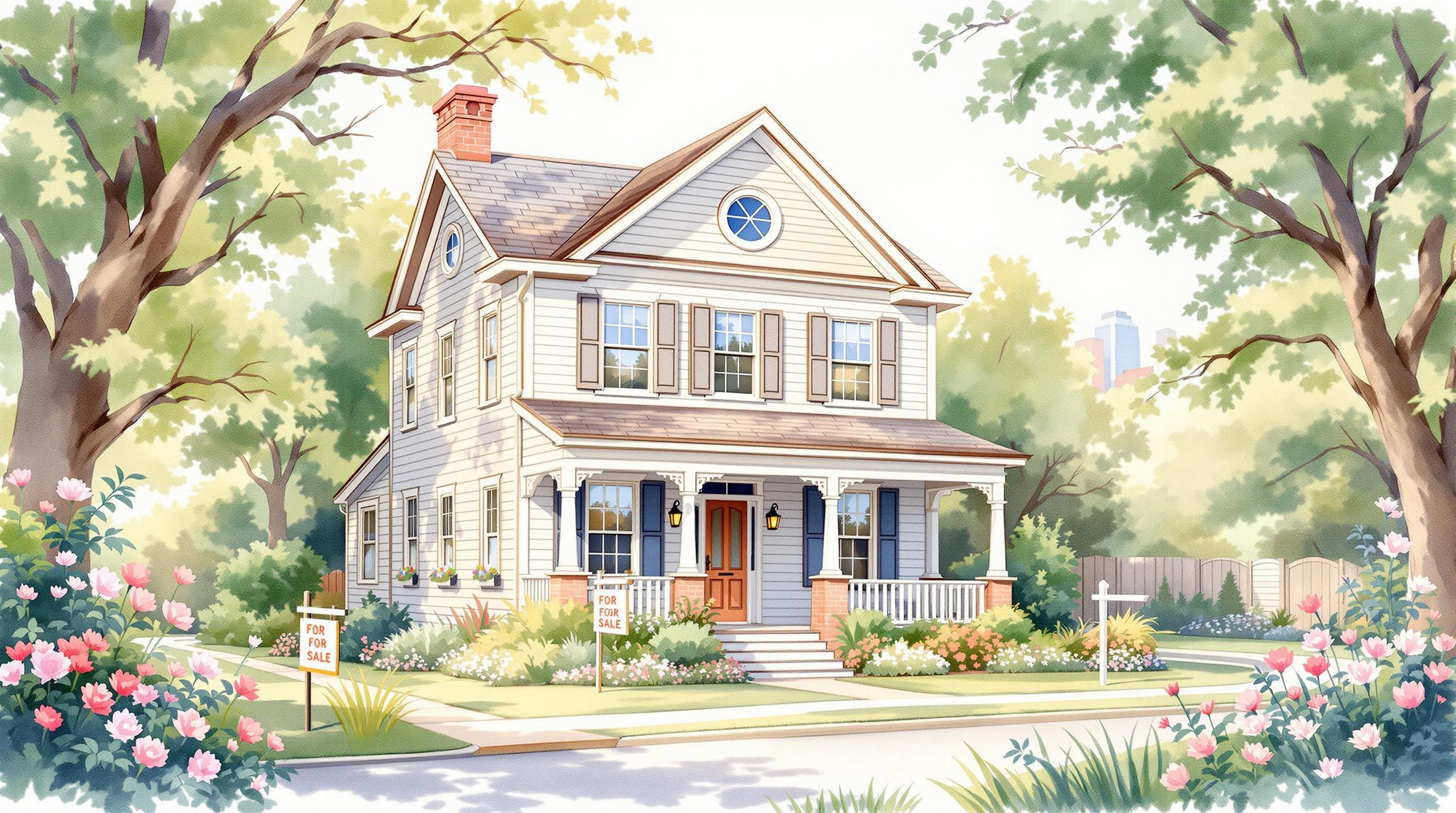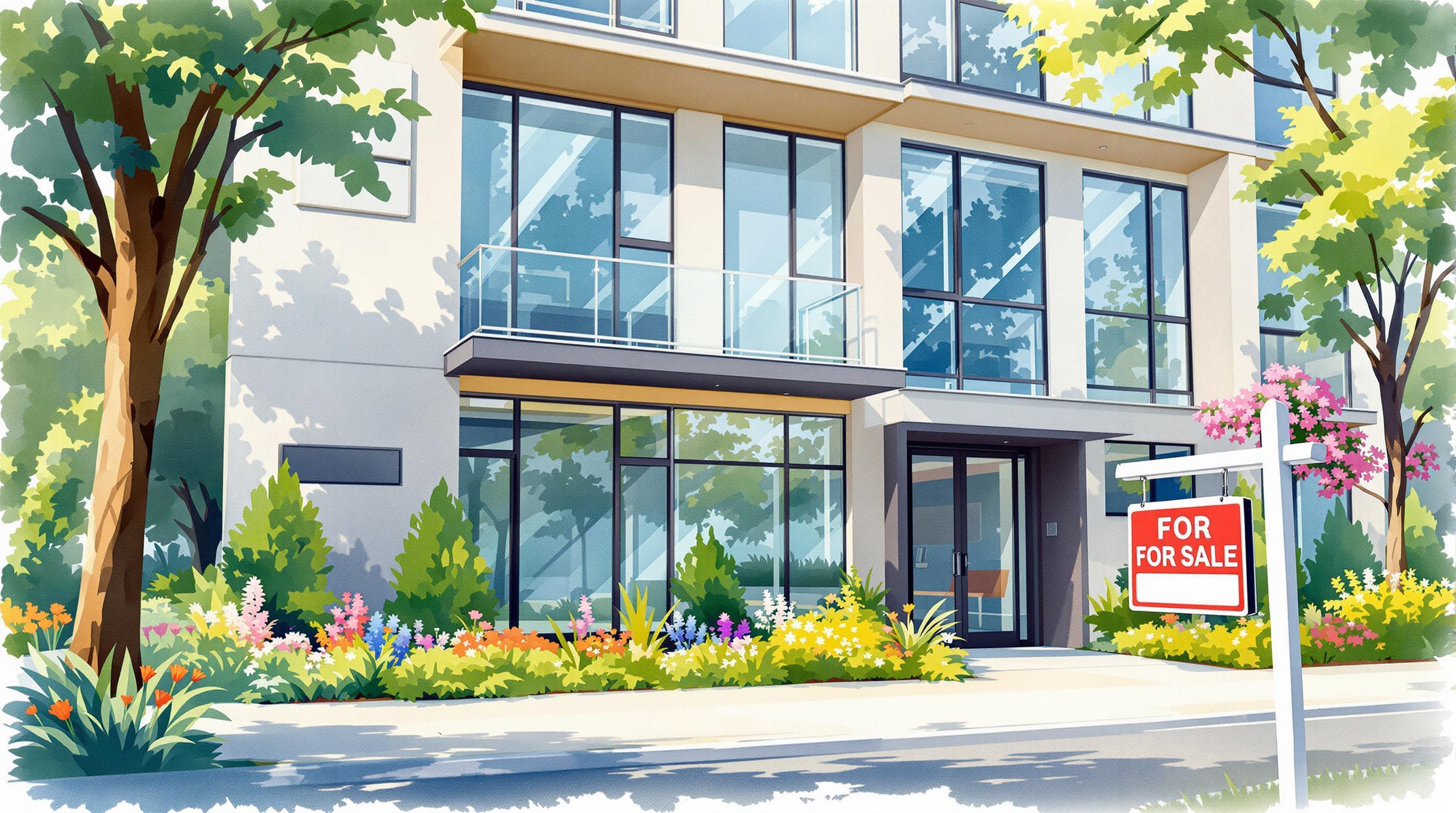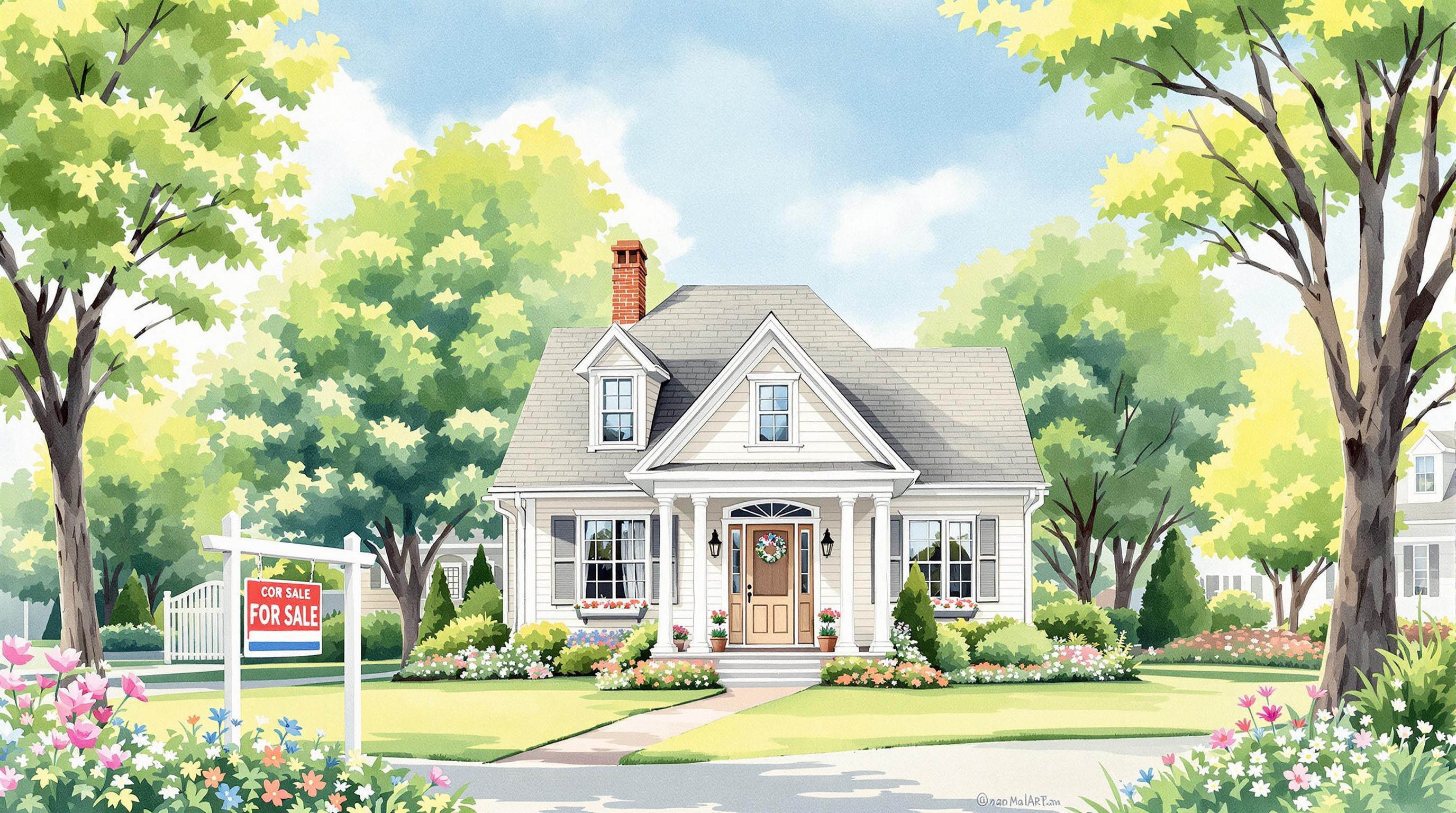Drip irrigation saves more water than sprinkler systems - up to 90% efficiency compared to 65-75%. Drip systems deliver water directly to plant roots, reducing evaporation and runoff, while sprinklers lose more water to wind and evaporation. Here's a quick breakdown:
Key Differences:
- Water Efficiency: Drip (90%) vs. Sprinkler (65-75%)
- Ideal Use: Drip for vegetables, fruits, and row crops; Sprinklers for large fields like corn or turfgrass.
- Water Loss: Drip minimizes evaporation (<5%), while sprinklers lose up to 40%.
- Costs: Drip has higher setup costs but lower maintenance; sprinklers are cheaper upfront but need more upkeep.
Quick Comparison:
| Feature | Drip Irrigation | Sprinkler Systems |
|---|---|---|
| Efficiency | 90% | 65-75% |
| Water Loss | Minimal (<5%) | High (15-40%) |
| Setup Cost | Higher | Lower |
| Maintenance | Less frequent | More frequent |
| Best For | Small, irregular areas or high-value crops | Large, uniform fields |
Drip irrigation is better for water conservation and targeted watering, while sprinklers are more suited for large-scale coverage. Your choice depends on your farm's size, crops, and budget.
Drip Irrigation Basics
How Drip Systems Work
Drip irrigation uses a network of tubes to deliver water directly to the base of plants. Operating at lower pressure than sprinklers, it ensures water reaches plant roots efficiently, reducing waste from evaporation and runoff. This method helps maintain consistent soil moisture levels, making it a highly efficient way to water crops [1].
System Parts
A drip irrigation system relies on four key components to function effectively:
| Component | Purpose | Maintenance Task |
|---|---|---|
| Drip Lines | Carry water across the system | Check for leaks regularly |
| Emitters | Control water release rates | Inspect for clogs |
| Pressure Regulators | Keep water flow steady | Test every three months |
| Filters | Block debris from clogging emitters | Clean monthly |
Emitters, whether point-source or line-source, ensure water is distributed evenly, avoiding clogs and pressure issues [1]. Pressure regulators help maintain a consistent flow, while filters catch sediment that could cause blockages [1].
Drip irrigation is particularly useful for fields with irregular shapes or slopes, as it can be customized to suit challenging layouts [7]. This precision makes it ideal for scenarios where targeted water delivery is critical.
While highly efficient for water conservation, drip systems serve different purposes compared to sprinkler systems, which may be better suited for other agricultural needs.
Sprinkler System Basics
How Sprinklers Work
Sprinkler systems are designed to distribute water over large areas, simulating rainfall using pressurized pipes and spray nozzles. While their spray patterns cover broad spaces, proper management and maintenance can help reduce water waste. Factors like weather and timing play a big role in how efficiently these systems work [1].
Sprinkler Options
There are three main types of modern agricultural sprinkler systems:
| Sprinkler Type | Characteristics and Applications |
|---|---|
| Fixed Systems | Best for small to medium fields; lower setup cost but more water overlap. |
| Rotating Systems | Ideal for medium areas; provides even water distribution and handles wind better. |
| Traveling Systems | Suited for large fields; covers wide areas but needs more infrastructure. |
To get the most out of a sprinkler system, water during cooler times of the day (like early morning or late evening), use pressure regulators to maintain consistent spray patterns, and inspect nozzles monthly to ensure even coverage and prevent backflow [8][10].
While sprinklers are great for covering large areas, their performance can be affected by factors like wind and evaporation. Comparing their water efficiency to drip irrigation can help determine the best option for specific needs [8].
Difference Between Sprinkler and Drip Irrigation Systems
Water Usage Comparison
In organic farming, where conserving water is crucial, selecting an irrigation system that minimizes waste is key.
Water Loss Factors
Drip and sprinkler systems vary greatly in water efficiency due to environmental factors. Sprinklers lose water through evaporation and wind drift as the water sprays through the air, often resulting in uneven coverage and waste. Drip irrigation sidesteps these problems by delivering water directly to the plant roots, reducing evaporation and runoff significantly [1].
| Loss Factor | Drip Irrigation | Sprinkler Systems |
|---|---|---|
| Environmental Losses (Evaporation & Wind Drift) | Minimal (<5%) | High (15-40%) |
| Runoff | Negligible | Moderate to High |
| Overall Efficiency | 90% | 65-75% |
Water Use Numbers
The difference in water usage between these systems is striking. For a 50,000 square foot farming area, sprinkler systems typically use around 997,353 gallons of water annually. In contrast, drip irrigation saves between 149,600 and 249,338 gallons. Drip systems maintain a steady 90% efficiency regardless of weather conditions, while sprinklers operate at 65-75% efficiency, with performance dropping further in windy or hot weather [1][3].
For farmers using sprinklers, upgrading to pressure-regulated systems and adding moisture sensors can help cut down on waste. However, even with these enhancements, sprinklers still can't match the efficiency of drip irrigation [10].
While water efficiency plays a major role, it's also important to weigh the costs of each system when making a decision.
sbb-itb-7fa5722
Price Comparison
Setup Costs
The initial costs for drip irrigation and sprinkler systems can differ considerably. Drip irrigation tends to be more expensive upfront because it requires specialized components like driplines and filters. Knowing these costs is crucial for farmers when deciding on the best option for their needs.
| Component | Drip Irrigation | Sprinkler Systems |
|---|---|---|
| Equipment Cost | Higher (specialized parts) | Moderate |
| Installation Labor | Higher (precise placement) | Lower |
| Additional Components | Filters, emitters, pressure regulators | Sprinkler heads, pipes |
| System Complexity | More complex | Less complex |
Upkeep Costs
Maintenance expenses also vary. Drip irrigation generally requires less frequent upkeep since its design reduces wear and tear and minimizes damage from weather. This leads to lower ongoing costs.
Sprinkler systems, on the other hand, often need more frequent maintenance. Components like nozzles and sprinkler heads are exposed to environmental factors, requiring regular replacement. These higher maintenance needs can result in greater long-term expenses.
Cost vs. Savings
Drip irrigation provides long-term savings by using water more efficiently. According to Netafim USA, drip systems can cut water usage by up to 50% when compared to sprinkler systems [1]. For a farming area of 50,000 square feet, this could mean annual water savings of $400 to $1,333 [1].
Drip systems are also more durable, lasting over 20 years with proper maintenance. The U.S. Department of Energy highlights drip irrigation as a way to reduce evaporation and runoff [10].
Key cost considerations include:
- Initial Investment: Drip systems have higher upfront costs.
- Water Savings: Drip systems use water more efficiently, leading to significant savings.
- Maintenance Requirements: Drip systems require less frequent maintenance.
- System Lifespan: Drip systems last longer than sprinkler systems.
For organic farmers, the higher upfront cost of drip irrigation often pays off through reduced water usage and lower maintenance expenses over time. However, factors like crop type, soil conditions, and local water costs should guide the decision to ensure it's cost-effective for their specific operation.
The final choice between these systems will depend on the farm's unique needs, which we’ll dive into next.
Best Crops for Each System
Matching crops and soil types with the right irrigation method can boost crop yields, save water, and cut costs. Here's a quick breakdown of which crops thrive under different systems.
| Irrigation System | Ideal Crops | Key Advantages |
|---|---|---|
| Drip | Vegetables, fruits, nuts, greenhouse plants | Targets roots directly, minimizes water waste |
| Sprinkler | Turfgrass, corn, wheat, cover crops | Covers large areas evenly |
Best Crops for Drip Systems
Drip irrigation works wonders for crops like vegetables, fruits, and nuts. It’s also ideal for greenhouse plants. The University of California Master Gardener Program highlights how this system boosts yields for high-value crops by delivering water directly to the root zone [8].
For example, tomato crops can reduce water waste by up to 50% with drip systems compared to sprinklers [8]. Grapevines also benefit, showing a 20-30% improvement in water use efficiency when using drip irrigation [9].
Best Crops for Sprinklers
Sprinkler systems are perfect for crops that need wide-reaching water coverage:
| Crop Type | Why Sprinklers Work Best |
|---|---|
| Turfgrass | Provides even watering over large spaces |
| Corn | Reaches tall plants with consistent coverage |
| Wheat | Distributes water uniformly over dense fields |
| Cover crops | Assures steady germination |
| Field crops | Adjusts easily to different field sizes |
Soil Types and Results
Soil type plays a big role in how well an irrigation system performs. For instance, sandy soils drain quickly, making them a better match for drip systems, while clay soils hold water longer, increasing the risk of runoff with sprinklers.
| Soil Type | System Suitability |
|---|---|
| Sandy | Drip is effective; sprinklers may lead to water loss |
| Loamy | Both systems perform well with decent efficiency |
| Clay | Drip avoids pooling; sprinklers can cause runoff |
Choosing the right system for your crops and soil can lead to better harvests, conserve water, and lower expenses. Up next, we'll dive into the pros and cons to help you make the best decision for your farm.
Pros and Cons
Let's look at the main strengths and weaknesses of each system based on performance data.
Side-by-Side Comparison
| Aspect | Drip Irrigation | Sprinkler Systems |
|---|---|---|
| Water Efficiency | 90% efficiency rate [1] | 75% efficiency for rotors [1] |
| Initial Setup | Higher upfront costs [2] | Lower installation costs [5] |
| Maintenance | Regular cleaning of emitters and filters needed to prevent clogs | Periodic replacement of nozzles and heads due to wear |
| Coverage Area | Works well for irregular layouts and specific zones | Great for large-scale areas [5] |
| Plant Health | Helps reduce fungal diseases and supports root growth [11] | Overhead watering may increase leaf disease risks |
| Weed Control | Limits weed growth by targeting water delivery to roots | Broad water distribution can encourage weed growth |
Drip irrigation stands out with its 90% efficiency, significantly cutting down water waste compared to sprinklers, which typically range between 50-70% efficiency. This makes it a strong choice for areas where water conservation is crucial [2][5]. Although drip systems require a larger initial investment, their water-saving design and lower maintenance needs often result in cost savings over time, as highlighted in our cost analysis.
Advantages of Drip Systems:
- Delivers water directly to plant roots, reducing evaporation and runoff.
- Works well with sandy soils that have high infiltration rates [4].
- Easy to expand or reposition to suit changing needs [8].
Advantages of Sprinkler Systems:
- Ideal for large fields and crops like turfgrass, wheat, and maize [11].
- Better suited for soils with low infiltration rates [2].
- Requires less upfront investment [5].
According to the United Nations Food and Agricultural Organization, drip irrigation can achieve water use efficiency rates of up to 90%, far surpassing traditional sprinkler systems [2][5]. Adding tools like rain or moisture sensors to either system can further improve water efficiency and ensure steady crop performance [10].
These factors provide a clear picture of the strengths and limitations of each option, helping farmers choose the best system for their specific needs. We'll dive deeper into these considerations in the conclusion.
Conclusion
Key Insights
Drip irrigation stands out for its ability to conserve water, achieving up to 90% efficiency compared to the 50-70% range seen with sprinklers. However, the effectiveness of each system depends on several important factors:
- Water Use: Drip irrigation minimizes waste by delivering water directly to plant roots, ensuring precise application [2].
- Soil Types: Sandy soils with high infiltration rates are ideal for drip irrigation, while sprinkler systems work better in clay soils [11].
- Costs: Drip systems may have higher initial costs, but their efficiency and reduced maintenance can lead to savings over time [1][6].
Finding the Right Fit
Choosing the right irrigation system depends on your farm's specific needs. Drip irrigation is well-suited for high-value crops, sandy soils, and farms focused on saving water, even with its higher upfront investment. On the other hand, sprinkler systems are better for large, uniform fields, clay soils, and farms requiring broad coverage on a tighter budget.
Studies reveal that farms using drip irrigation often see healthier crops due to fewer fungal diseases and improved root growth [11]. These benefits, combined with its water-saving capabilities, make drip irrigation particularly useful in areas where water is scarce.
To get the most out of your system, focus on proper design and consistent monitoring tailored to your soil and crop requirements [4].
FAQs
What are the benefits of drip irrigation compared to sprinkler systems?
Drip irrigation delivers water straight to the plant roots, which helps minimize evaporation, runoff, and wet foliage. This reduces the chances of fungal diseases and weed growth. It's a more efficient way to conserve water than traditional sprinklers [1][8].
Is drip irrigation better than sprinklers?
The better option depends on your specific farming needs. Drip irrigation is great for precise water delivery and conservation, while sprinklers work well for covering larger areas evenly. Here’s a quick breakdown:
Drip Irrigation Works Best For:
- Targeted water delivery
- Saving water
- High-value crops
- Uneven or sloped terrain
Sprinkler Systems Work Best For:
- Large, flat fields
- Broad, even coverage
- Cooling the atmosphere
- Crops that prefer overhead watering
How efficient is drip irrigation compared to sprinkler systems?
Drip irrigation systems are about 90% efficient, while sprinklers typically range from 65% to 75% [1][3]. Drip systems do require regular maintenance to avoid clogging, but their precise water delivery and higher efficiency often make the extra effort worthwhile [11][8].
The right choice depends on your farm's specific conditions and goals, as highlighted earlier in this article.



